In 2016 and 2017, the Anyang Archaeological Team of Institute of Archaeology, Chinese Academy of Social Sciences (IA CASS) set two archaeological locations in the eastern Dasikong area. One is Rural Resettlement Excavation Location and the other one is Shanty Towns Excavation Location. Both of them were located in the northeast of Yinxu site (Ruins of Yin) and its north is close to the south wall of Huanbei Shang City. The Rural Resettlement Excavation Location reached 3,100 square meters, where 5 roads, 4 housing foundations, a well, 309 ash pits, 156 burials of the Yinxu Period and a few features of the late phase were found. While in the Shanty Towns Excavation Location, a road,9 housing foundations, 30 burials, 3 horse-chariot pits, 203 ash pits, 2 wells of the Yinxu Period and a few features of the late phase were discovered on the construction areas of Dasikong shanty town, with an area of about 1,500 square meters.
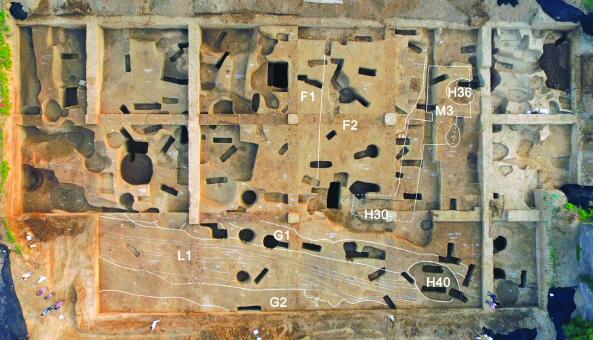
Excavation Achievements
Both of the excavations at the two locations had significant achievements and unearthing roads, a large tomb with a leading passage, 3 horse-chariot pits and an oracle bones pit without inscriptions.
There were 5 east-west roads found in the Rural Resettlement Excavation Location, which slightly southward to the east, with the same orientation as the previous remains of the Shang Dynasty and 3 layers in the same space basically: the upper, the middle and the lower.
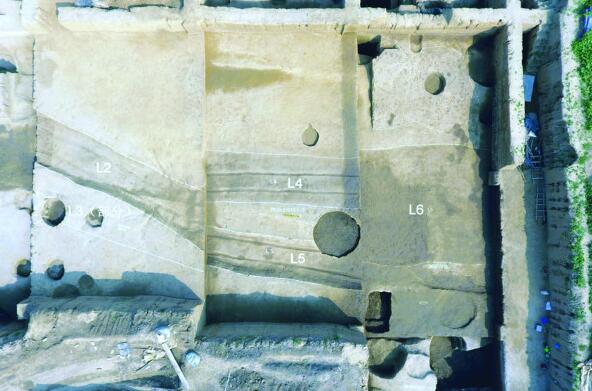
In the Shanty Towns Excavation Location , an east-west road (L1) about 4 meters wide was discovered, slightly southward to the east, with a rough shallow ditch and densely-distributed remains of the Yinxu Period along each side, which should be of a different level from road L6.
Housing Foundations The area of the two housing foundations were not big, only with basement ditches left on the construction area, one of which located in the Shanty Towns Excavation location (F6) is unique . The underground basement ditches of the east and west sides were interrupted by the ash pits of the Yinxu Period. The main body of the construction should have been outside the archaeological excavation area (north). Built with gritstone slates that hadn’t been seen before, the drainage channels underground were higher in the north and lower in the south, running from the northern wall of the excavation unit down to the roads in the south.
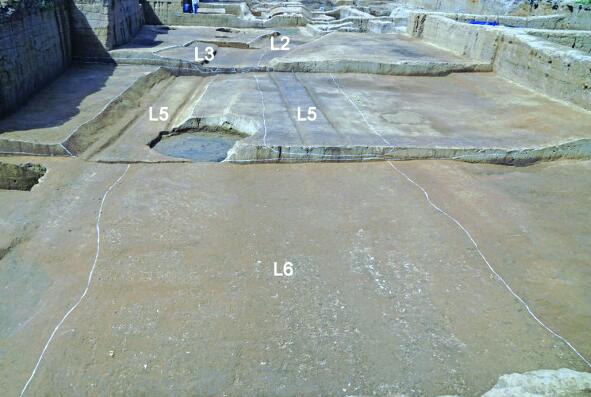
Oracle Bones Pit An oracle bones pit (H279) is a pouch-shaped pit with a diameter of 1.8 meters, a bottom diameter of 2.4 meters and a depth of 1.6 meters, where there were mostly oracle bones without inscriptions unearthed, such as cattle scapula and a few turtle shells.
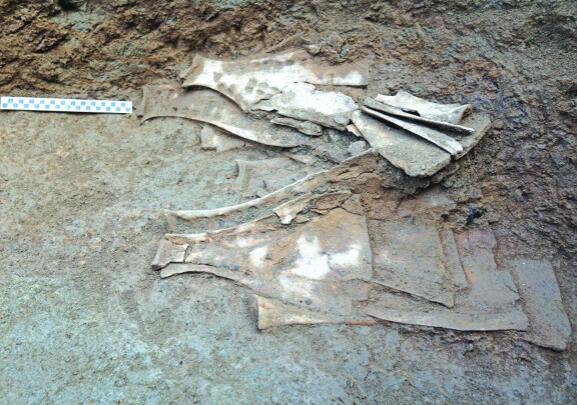
Large Tomb M3 There is a passage to the south, with an entrance of 5×4.1 meters wide and 7.5 meters deep into the tomb. An outer coffin was found, and there was a cattle shank bone on the eastern second-tiered platform, while a victim of human sacrifice was on the northern second-tiered platform, with remains of a dog and a human skull buried with soil. On the Southern second-tiered platform, there was a piece of stone chime, crocodile skins and rotten wood, in chaos inside the coffin after excavations and robberies. Moreover, fabrics with a colored pattern (maybe kinds of curtains) in black and red on the walls of both sides of the tomb passage were discovered close to the M3 chamber. The similar fabrics, in poor preservation, were also found on the outer coffin and walls surrounded inside the chamber, hanging with bone nails stuck. And there were two horse-chariot pits along the tomb passage.
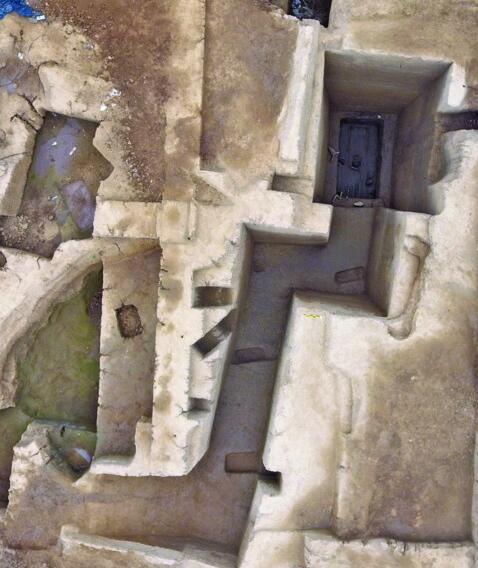
Academic Significance
The excavation of roads of the Yinxu Period improves the road networks in the northern area of Huan River. According to the previous relevant discoveries on the Ruins of Yin, it’s learned that the roads of Great Shang City were of three different widths: the wide (above 10 meters), the medium (around 7 meters) and the narrow (3 to 4 meters), to match with the roads, streets and lanes of the cities in later ages. The excavation provides new scenarios for the investigation on the internal structure of settlement in the northern area of Huan River. It is rare to find the pattern of a passage leading to a large tomb. Also, new information was provided for the research on burial regulations of the Shang Dynasty. (Translator: Yuan Yuan)





